UIC faculty share experiences teaching remotely
Since March 30, UIC faculty members have shifted their in-person courses to remote learning due to COVID-19.
Here’s what the experience has been like for a few of UIC’s faculty members:
Virginia Reising, UIC Nursing
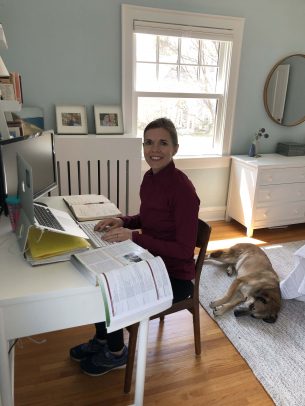
What adjustments have you made to move your courses online?
Prior to COVID-19, my class was hosted weekly in person. We have had to move our in-person classes online while still maintaining open discussion and case study as methods of learning. Utilizing the Zoom breakout rooms has been really helpful in letting students engage with each other in small groups.
The clinical portion of the course has moved online as well, and while I have tried to create learning experiences that mimic those the students would have had in person, it will, of course, be a different learning experience. To supplement their learning, we have created opportunities for them to simulate being with patients by hosting online simulation with actors serving in the role of patient. This allows the students to continue practicing their therapeutic communication and assessment skills.
How are the remote courses going?
I have been so impressed with the student’s commitment to continued learning during what is a stressful and intense time for all. Students continue to show up to the online class time on time, prepared and ready to engage. This model of learning forces students to take ownership of the learning experience.
We start each session with a general check-in and students are given a chance to share how things are going in their lives. I have been surprised by how eager some students are to share their successes and challenges. These online sessions remind me that while we are physically distanced, the need for social connection has not disappeared.
Dale Reed, UIC Engineering
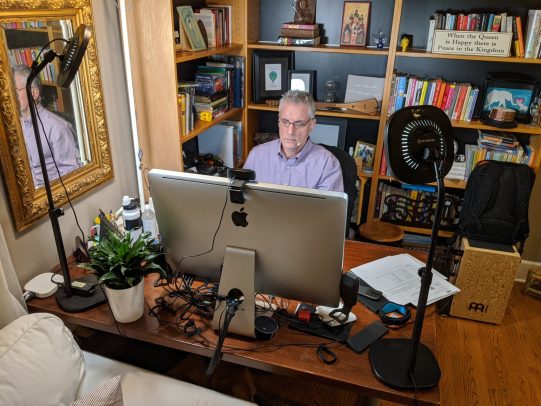
What adjustments have you made to move your courses online?
I have had to re-invent myself as a teacher, re-casting into a different mold. I have spent three decades working on being effective face-to-face, but online is different. I have been working hard to provide the same interactive peer-instruction practices that many students find useful. I still use clickers, but they are web clickers. I still have groups of three or four students briefly talk in small groups, but they are now all separate Google Meet groups. I still have students collaborate and compare answers with other groups, but now the comparison takes place online in a shared Google Slides document that the whole class edits together, with each small group having their own page where they collaborate on questions, answers and show their work.
Knowing how tiring it can be to listen to poor audio and watch grainy video, I’ve invested in a headset mic, a nicer webcam and lights to minimize poor communication due to equipment issues. Office hours are online.
How are the remote courses going?
OK, though it greatly increases the burden on students to be active in their engagement with learning. In class, there is social pressure to participate, but at home with the webcam off, each student needs to work harder to get the same level of engagement. Staring at a screen all day and listening to compressed audio online is fatiguing, both for me and for my students.
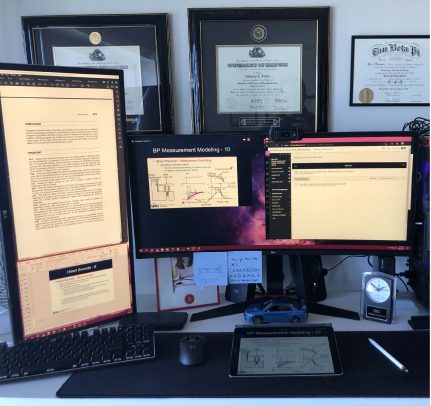
Anthony Felder, Bioengineering
What adjustments have you made to move your courses online?
Some classes are easier to move online than others, but in general, I’ve tried to maintain consistency and rigor as I would with a traditional semester. I hope this helps us to focus and take our minds off of the ongoing pandemic. Notably though, all of my lectures are still given live, but now recorded and through BB collaborate. For teaming classes, we’ve migrated all communications to webconference software to help ensure we still work together cohesively.
How are the remote courses going?
Remote classes are a challenge in many ways. I think focusing is hard when you use your home for everything (work, school, relaxation, eating, sleeping) and that’s a challenge for us all. These remote classes also make it hard for me to read the room — I’m delivering technical content to a blank screen with no faces and feedback is minimal. However, I am consistently surprised by the tenacity and adaptability of our students to the pandemic — their grit and dedication is really inspiring!
John Coumbe-Lilley, Applied Health Sciences
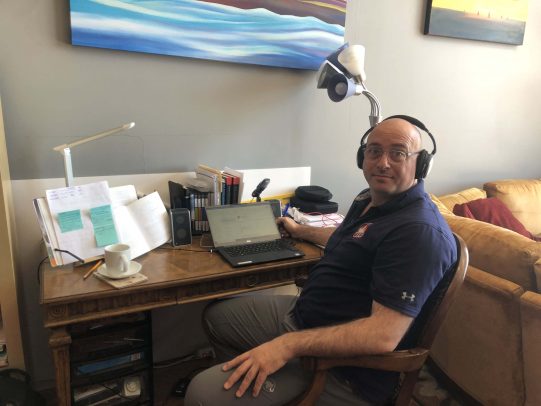
What adjustments have you made to move your courses online?
Since I completed the Illinois Online Network certificate program at our sister school in Springfield in 2012, I have developed courses since then to move from face to face to online in short order. I am fortunate I had great training and have been teaching online, hybrid and face-to-face courses regularly. Recently, I needed to learn how to make better instructional videos, learn new software, use different technologies and make sure I over-communicated with my students. My teaching network expanded to include colleagues outside UIC who make human resources and training and education videos for corporate clients. I have been able to share what I learned with my colleagues because of our department’s commitment to teaching.
How are the remote courses going?
I feel satisfied with how things are going; I think students have shown remarkable resilience and adapted well in spite of barriers like access, hardware and bandwidth issues. I observed many colleagues make huge strides in a short time, often working 12-18 hour days to learn, adapt and implement remote learning. I feel given we are essentially providing emergency remote learning, we are doing very well. No doubt things have been difficult for some more than others, but nobody can doubt the commitment of UIC educators, administrators and most importantly students to making the best of a special situation nobody asked for.
Katie VanderZwan, UIC Nursing
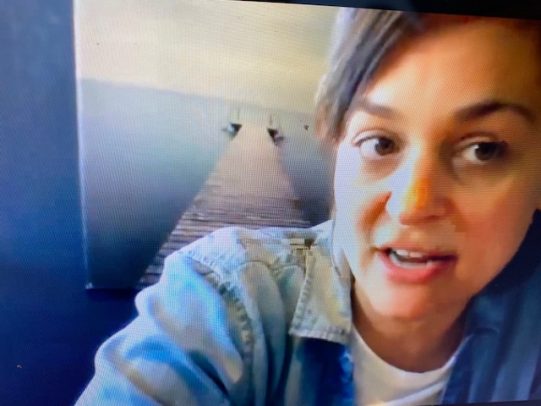
What adjustments have you made to your courses to move them online?
Weekly lectures have been “live” via Zoom with use of narrated Powerpoints as needed. Emails to and from students have been plentiful. Additional “group” projects that were supposed to be presented live are now being displayed via Blackboard Discussion Board posting, almost like a blog, to promote student engagement. Exams have been given remotely using Examsoft software, which thankfully was in place earlier in the semester!
How are the remote courses going?
In general, students and faculty have been flexible, which has been key to success. I miss seeing my students in lecture live; however, given the unprecedented times, I think we are doing the best we can! I have made sure to streamline assignments and students have appreciated extensions and flexibility on due dates!
Categories
